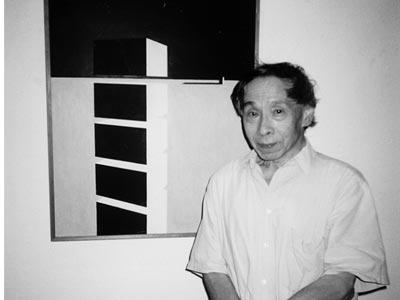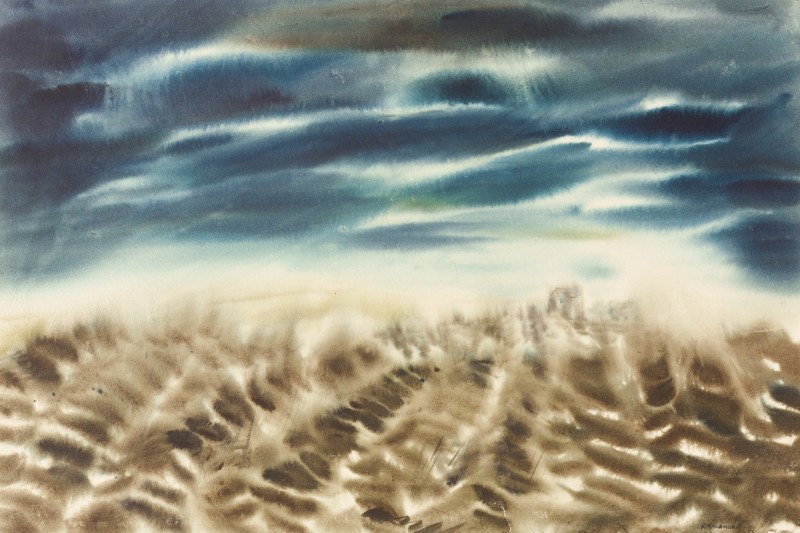
Kazuo Nakamura, born in 1926 in Vancouver, British Columbia, is a name that resonates with both innovation and resilience in the world of Canadian art. The son of Toichi and Yoshiyo Nakamura, Kazuo's early life was shaped by the turbulence of World War II, an experience that would profoundly influence his artistic journey. In 1942, the Nakamura family, like many others of Japanese descent, was forcibly relocated from the coast to the interior of British Columbia due to wartime fears and prejudices. This upheaval marked the beginning of a life characterized by displacement, adaptation, and ultimately, profound creative expression.
Early Influences and Artistic Beginnings
After the war, in 1947, the Nakamura family moved east to Hamilton, Ontario. It was in this industrial city, far removed from the coastal landscapes of his birthplace, that Kazuo first discovered his passion for painting. While working as a semi-skilled laborer in a box factory, he began to explore art, initially studying at night at the Hamilton Technical School. His determination to pursue a career as a full-time artist led him to enroll in the Toronto Central Technical School in 1948. There, under the tutelage of esteemed instructors like Charles Goldhamer, Doris McCarthy, Peter Haworth, and others, Nakamura honed his skills and began to develop his unique artistic voice.
Emergence as a Prominent Artist
Nakamura’s early exhibitions quickly established him as a significant figure in the Canadian art scene. His first participation in a public exhibition came in 1950 at Eaton's unaffiliated artists show, and by 1952, he was holding his first solo show at the Picture Loan Society. This was followed by another solo exhibition at Hart House in 1953. His growing reputation caught the attention of William Ronald, a fellow artist who invited him to participate in the landmark "Abstracts at Home" exhibition at Simpson's department store in 1953. This event, significant in the evolution of abstract art in Canada, introduced Nakamura to a broader audience and positioned him as a leading voice in the burgeoning abstract movement.
Artistic Style and Contributions
Kazuo Nakamura’s work is often described as a delicate balance between intellectual exploration and lyrical abstraction. Critics, like George Elliott in Canadian Art, noted the dual nature of his subject matter—drawing from both a "racial instinct for landscape" and a fascination with man-made structures. His landscapes, imbued with a Japanese sensibility of precision, simplicity, and ethereal beauty, stood alongside his abstract interpretations of industrial forms. Nakamura's innovative techniques, which included the use of razor blades, linoleum cutters, and string, among other tools, allowed him to create textured, layered compositions that were both visually compelling and intellectually stimulating.
His involvement with the Painters Eleven, a group of abstract artists in Ontario, further cemented his role in the Canadian art world. An article by Jock Carroll in Weekend Magazine highlighted Nakamura's reputation as an intellectual artist with an encyclopedic mind, reflecting his deep engagement with the philosophical and scientific underpinnings of his work.

Later Career and Legacy
Throughout his career, Nakamura continued to evolve, blending his interests in still life, landscape, and geometric abstraction into a cohesive and distinctive style. His string paintings, in particular, gained critical acclaim for their "beautifully profound" quality, as described by Dennis Reid. Nakamura’s work was celebrated in numerous solo exhibitions, including major shows at the Morris Gallery and Hart House in 1970, which showcased both his retrospective and current works.
Nakamura's contributions to Canadian art were recognized with several prestigious awards, including a prize at the Fourth International Exhibition of Drawings and Engravings in Lugano, Switzerland (1956), and a purchase award at the Fifth International Hallmark Art Award Exhibition in New York (1960). His works are held in prominent collections across Canada and internationally, including the National Gallery of Canada, the Museum of Modern Art in New York, and various university and corporate collections.
Conclusion
Kazuo Nakamura's legacy is one of quiet but profound impact on the Canadian art landscape. His ability to blend cultural influences with a deep intellectual curiosity allowed him to create works that are both visually striking and deeply meaningful. Nakamura’s art continues to inspire and resonate, reflecting the complexity of his experiences and the clarity of his vision. His journey from a displaced youth to a celebrated artist is a testament to the enduring power of creativity and the human spirit.
Browse our collection of Canadian paintings for sale at the Canadian Classic Fine Art gallery, The best place to buy a painting online. We provide free shipping anywhere in Canada and the United States. Our Montreal art gallery sells paintings online exclusively and have a 14 days return policy.
